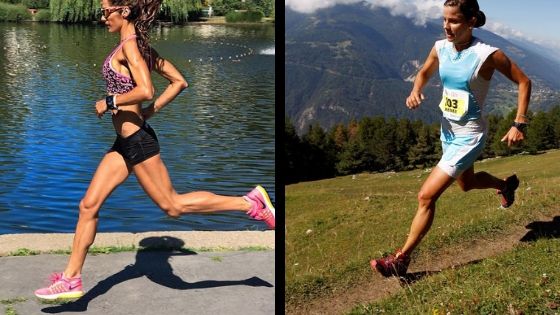
A couple of years ago I injured my knee when I tripped and fell over my dog. A seemingly innocuous accident that put me on crutches for almost two months, while having to swallow mega-strength anti-inflammatories that equated to pouring a gallon of quick-set concrete into my gut. My first concern? Will I be able to run again and if so, which will be better for my knee: road or trail running?
Is trail running better for your knees? Trail running is better for your knees because of the differences in terrain. Unlike road running, the constantly varied terrain of the trail means no repetitive loading of the same ligaments, tendons, and muscles, which can be bad for your knees in the long run.
Lately, I have needed to re-access my running training. I was starting to suffer from shin splints and knee pain in spite of my newly acquired and rather expensive zero drop running shoes. After years of pounding the road, the truth dawned on me. The pavement was not doing me any favors.
Something needed to give and it sure wasn’t gonna be my knees. If not, then what? I simply couldn’t picture my life without the joys of running. How do I keep on running if not on the road? I took a chance and switched to the trails. Voila! I found trail running worked better for my knees. Here’s why.

No two steps are the same
The main difference between road running and trail running is the unpredictability of the surface. In the event of road running, the predictable surface can encourage a sloppy form, which can be bad for your knees. Unless you make a conscious effort to keep your feet and ankles loose, the repetitive stride on the road can lead to chronic injuries such as patellar tendonitis, IT band syndrome, and ankle and knee pain.
Trail running, on the other hand, requires more “work” to keep up with the variable surfaces. Not only is the variety of the terrain reducing the loading of stresses on your body, but it will also slow down your pace, reducing your injury risk. All in all, running on trails will build strength by maximizing the use of minor and stabilizing muscles, making it a more effective and complete workout.
Better on my toenails too
So far I have been lucky enough to sidestep the loss of any toenails, though friends tell me it is only because I don’t run far enough on the road.
There is more than a sliver of truth in that casual statement. If you have a toenail that tends to bump against the front of your shoe, running on the road will dislodge it a lot faster. That is because each foot strike is identical. This causes your toenail to get bumped at exactly the same angle with each and every step.
When you run on trails your foot strike will be different each time. This means you are likely to have way fewer toenail bumps against the front of your shoe. Even if your toenail bumps the front of the shoe as often as once each minute on the trail, it will still be ninety times less than running on the road.
Different shoes will affect your knees differently
Back when I ran high school cross-country my running shoes were a pair of road shoes that had a big heel-toe drop that was standard during the 1980s.
Even though I would race on both grass and soft earth, all my training would be pounding the asphalt. Add to that the way my shoes forced a shift to more and more heel striking, little wonder that both my knees were injured by the time high school was over.
When I got back into running about ten years ago I made sure to relearn a mid-foot landing running style that took the strain away from my knees.
These days I have a collection of shoes for different conditions that all promote my knee-friendly running style. I have written about the different pairs of running shoes that I use. You can see that article by clicking this link.
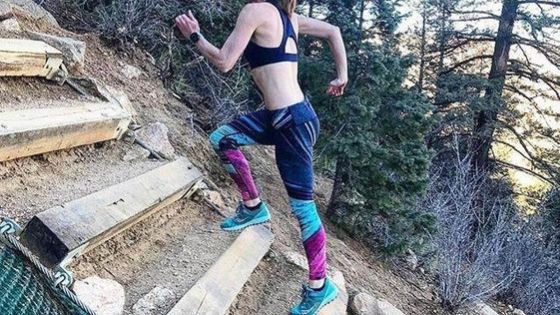
The paradox of trails – rougher and softer at the same time
On the whole, trails are a lot softer on your body and in particular your knees than concrete or asphalt.
In spite of the softness, many trails can be incredibly rough. Besides giving you plenty to trip over, a very rough trail can cause bruising or damage to feet.
I remember one run in particular. I was testing a pair of ultralight racing flats that very soft zero-drop soles around a half-inch thick, maybe less. My route near the coast of the Spanish province of Murcia included a three-mile stretch of 1500-year-old Roman cobblestones. The soles of my feet got pounded into a range of shades of blue.
No more sloppy form
I ran almost exclusively in minimalist running shoes a couple of years ago. By minimalist, I mean less than a quarter-inch (6mm) sole under the shoe.
What I noticed was that the predictable surface of asphalt meant that my mind would wander. That, in turn, would take my attention away from maintaining an efficient running form. Before long my running form would break down into old bad habits that included some fairly aggressive heel striking.
Conversely out on the trail that kind of sloppy running form usually ends in a face-plant and a trickle of blood from a grazed knee.
Train like Eliud Kipchoge
Before you get too excited, not for a moment am I suggesting that your training should be anywhere close to the speed and intensity of the world record holder in the marathon.
What sets Kipchoge apart from western runners trying to emulate him is how little he trains on asphalt even though asphalt is the surface that he races on.
The chances are that Eliud Kipchoge is lighter than you are. Therefore, if he and his coaches have chosen dirt as the surface that he should use for almost all of his training to stay injury-free – surely you should consider that too.
Concrete is the worst
One of the factors of running on asphalt that is hard on my knees is the road camber that slopes down to the gutters at the roadside.
However, concrete is an altogether different experience. On the one hand, asphalt is a bit softer than concrete, meaning that concrete feels more jarring than asphalt.
Here in Spain, concrete is used for many of the narrow streets in most towns as well as rural tracks. What is different is that these roads have a single gutter running along the center of the road. These roads are only one car wide meaning that cars are able to drive straddled across the gutter. Running on these roads is brutal as each of your feet is on an opposing camber of the road. A camber that promotes your knees collapsing inward.
If I run for too long on these opposing in turned cambers both my knees and shins are in agony.
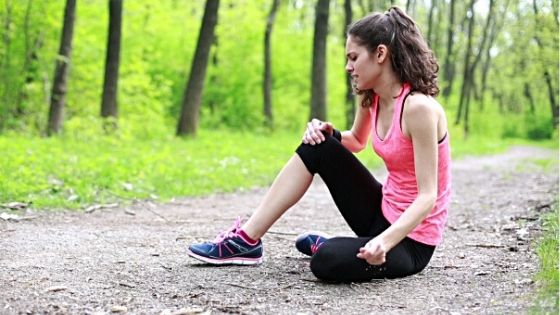
Trail running risks
Trails are more forgiving than asphalt and at the same time more technical. Trail running is riskier in terms of acute issues such as falls and sprains.
Road running is riskier in terms of chronic injuries such as patellar tendinitis and IT band syndrome. This is due to the more repetitive stride we see on roads vs trails.
Trail running certainly is more “work” due to hills and less efficiency from the variable surfaces you encounter. As a result, your pace will be slower on trails and for staying injury-free is to vary the stress load on your body. For this reason, both road running and trail running are great to work into your routine.
Adapting to each foot strike
The main difference between road running and trail running is that your foot/ankle/shin/calf/knee/thigh/and hip have no idea what to expect every time your foot lands whereas on asphalt it’s the same every single time.
You have to be aware of what your feet are doing and correct your body accordingly or you go down – or worse, hurt yourself. Over time, you begin to use these little muscles to stabilize your whole body that running on pavement seems SO EASY by comparison.
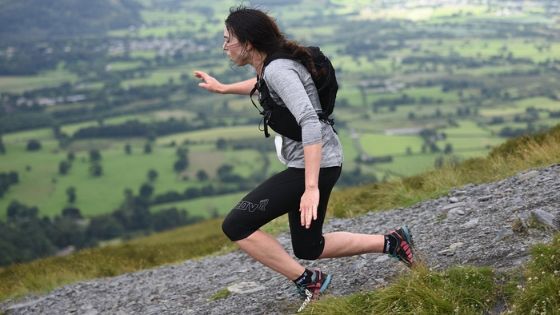
Trail running and arthritis
There is a commonly held myth with non-runners that any sort of running, including trail running, will cause arthritis in the knees. It reminds me of the meme that I saw years ago about nobody batting an eye if you eat a 3000+kCal lunch of a double burger, with supersized fries and soda. However, the moment you pull on a pair of trainers for a run those same people will cry out: “but your knees!”
The truth is that jogging or running, especially out on the trails, will not cause arthritis. However, if you already have arthritis of the knees and a compromised meniscus so that your knees are bone-on-bone then running will likely make that already bad situation much worse.
If your knees are already compromised by arthritis then it will be wise to consult your doctor or sports doctor before you start running.
Conversely, trail running will stave off the onset of arthritis if that is your genetic predisposition. It will help you stay active through into your later years as the compressive action of running promotes more lubricating fluid within your knees and keeps them moving.
Structural weaknesses
The knees take a lot of pressure. The hipbone is a very nice ball and socket, and the ankle is set up in a good way, but the knees can take nice, happy cartilage and start to break it down over time.
The condyles of the femur (thigh bone) are round and rest on the flat surface of the tibia (shin bone). There is always a place where the two bones touch bone-to-bone (as a basketball on a table would do). Both of these bones have a coating of hard, shiny, firm cartilage at the ends, enabling the bones to glide on one another.
The C-shaped meniscal cartilage in the knee is spongier — like your nose or ear. It helps stabilize the thigh bone on top of the shinbone and provides cushioning as we run, jump or walk.
But over time, the meniscal cartilage can wear down and lose its sponginess, and thus not absorb as much shock. The bones then pound on each other harder, and from that friction, arthritis develops and worsens. The pounding can also chip away at the hard cartilage which, in turn, causes more friction.
However, there are body types out there that are not conducive to running. For example, people who are excessive pronators have the inside part of their feet drop inward more than it should when they’re running. That causes stress on the feet and knees, so their bodies are naturally not great shock absorbers.
Inherently, running is good and healthy for most people, but it’s a matter of how you get started in it, and it’s a matter of slow progression.
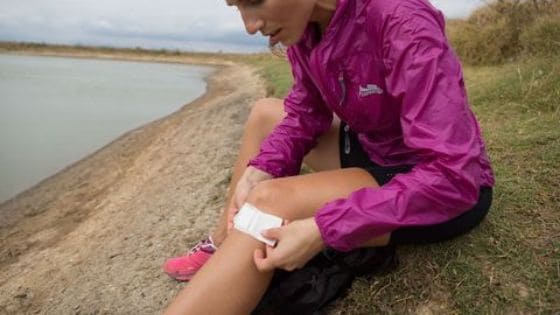
Stride pattern and Impact forces
The lighter you are, and how well you land your feet are also important. Not everybody hits the ground with the same relative amount of force: Some people walk softly, and some sound much louder walking by. For those people who hit heavier, that extra force is an issue. Then there’s the issue of whether your weight is healthy for your knees.
When I returned to training after a severe rock climbing (impact) injury, I started with swimming and mountain biking until I had shed 15 lbs of weight before easing back into running.
So, yes you can begin to develop arthritis from the pounding from running. However, the person who is active and fit and moving around is doing the most active defense against arthritis. There’s a happy medium between whether you run smart, slowly building up your endurance, and stay active, and if you put extra force on your knees.
Some people who are genetically set up for arthritis, and no matter how well they run, they will end up developing arthritis.
Hyperextending knees
People who have hyperextending knees — technically the term is genu recurvatum — are also going to have trouble running. Those who have some of these issues can run, but they may not be able to run more than a mile or two.
Hyperextending knees is something that I see often in the gym, most notably on the leg press machine.
The main problem with hyperextending the knees is that it places the force vector between the hip and ankle in front of the knee joint. This places you at risk of your knee shattering as it bends back on itself the wrong way.
Overpronation
Overpronation is when the arches of the foot roll inward or downward when walking and is often referred to as flat feet. … Some pronation is normal. Overpronation is when the foot rolls inward toward the arch excessively and can cause various injuries.
When you’re looking at starting a running program, one you might want to start with a walking program first, then make the leap to an easy running program.
As you go through these steps of increasing your activities, it’s important to listen to your body. If you are getting knee pain when you go from 5 to 7 miles a day, which could be your threshold for you.
If you have any type of existing pain or discomfort in your legs, it’s not smart to keep running.
Injuries related to overpronation
Overpronation puts people at an increased risk of developing specific injuries. This is because it disrupts the body’s natural alignment and causes increased impact when the foot strikes the ground.
Athletes with overpronation, particularly runners, see an increased likelihood of developing overuse injuries.
Injuries that frequently occur in people with overpronation include:
- shin splints
- bunions
- heel pain
- plantar fasciitis
- iliotibial band syndrome, an inflammation of a ligament on the outside of the knee
- chronic lower back pain
- stress fractures in the foot or lower leg
- patellofemoral pain syndrome
- Achilles tendonitis
Foot pathologies as a cause of overpronation
Overpronation may be caused by a fallen arch, commonly known as flat-foot. Overpronation is generally caused by flat, very flexible feet. Sometimes, people are born with flat feet. However, there are also conditions and situations that can increase a person’s chances of developing flat feet or weakened arches, which can lead to overpronation.
These conditions and situations include:
- being pregnant
- being overweight or obese
- taking part in any activity, such as running, that involves repeatedly striking the foot on a hard surface for an extended period
Self-diagnosis of overpronation
Many people who overpronate know they have flat feet without seeing a doctor.
If a person thinks they may overpronate, then they can self-assess first using one of the three following methods:
- They should first look at their feet while standing. If there is no clear space between the foot and the floor where the arch should be, the person likely overpronates.
- If a person is a runner, they can check the state of their running shoes. If the majority of the wear is on the inner part of the running shoes, they are likely a person with overpronation.
- They can also check their footprint after taking a few steps with bare, wet feet. A person with normal pronation will see their heelprint connected to the toeprints with about half of their foot width. A person who overpronates will see their heelprint connected with the full width of their foot.
If a person tries these three methods and is still not sure whether they overpronate, they may choose to either visit a specialty running store, podiatrist, or orthopedic surgeon. At some specialty running stores, the clerks are trained to check for overpronation.
A podiatrist, orthopedic surgeon, or physical therapist can make a definite diagnosis. A person should see a specialist for overpronation if they are experiencing pain or chronic injury, especially if they have tried to self-correct the problem in the past.
A specialist can recommend treatment options that may help solve the problem.
What about treadmill running for correcting overpronation?
When it comes to overpronation, treadmill running can be both a blessing and a curse.
The primary benefit you will get from treadmill running is that treadmills, on the whole, have shock-absorbing properties. This is especially true when you compare treadmill running to running on asphalt. If you are used to running on soft dirt trails and on grass you will hardly notice a difference.
The second benefit relates to the fact that a treadmill has a motor moving the belt for you. If you were to be running outside you would need to convert your impact force into a driving motion to propel your body forward. The moving treadmill belt takes care of most of that for you, effectively pulling your foot through beneath you. That minimizes your contact force through the area of contact most affected by your overpronation.
The third benefit is one that I have found to be crucial for my own running.
Running on a treadmill is a controlled environment. That means that you will be able to set up a camera, or for that matter multiple cameras and video your running form and look at how your foot strikes on each stride. If you are able to connect your camera to a monitor you can review your stride and foot strike in real-time and observing how different changes to your stride actually look.
The downsides to running on the treadmill may at first seem confusing as they seem to relate to some of the same aspects of treadmill running that are listed among the benefits of treadmill running.
The first downside to treadmill running relates to the same motor driving the belt that I mentioned earlier.
While it is true that the treadmill minimizes your impact force by pulling your foot through beneath you from the contact point which is a good thing for reducing knee impact. At the same time, the treadmill will compensate for any overstriding that you are doing.
This effectively makes it possible to overstride even further than you otherwise would. If you are not careful, this will worsen an already bad habit. The trouble is that you will not notice this worsened habit until you are back running out on the trails again.
Next time you are at the gym, pause a moment and watch the others running on the treadmill. It will be easy to spot those that do most, if not all, of their running on a treadmill. Those will be the runners with very pronounced overstriding. Overstriding will exacerbate the effects of overpronation. You can also see evidence of this on gymnasium treadmills, the plastic guard in front of the treadmill belt will often show wear patterns from the shoes of overstriding runners scraping across.
The golden rule here is not to do all your running on the treadmill lest you run the risk of creating the bad habit of overstriding and overpronating. One useful trick to counteract the temptation to overstride is to set the incline of the treadmill to one or two degrees.
The Impact of overtraining on knee problems
I find that I am most prone to picking up a painful niggle in my knee if I have been overtraining. This is because I have not given the muscles and other connective tissue around my knee enough time to recover from the previous effort.
This is one of the most tricky aspects for new runners to cope with. As you start out you will also experience how your cardio fitness improves much faster than the strength of tendons and ligaments.
Therefore if you increase the amount of running that you do at a rate that will keep up with your improving cardio fitness, you will push your ligaments and tendons past the point of recoverable fatigue.
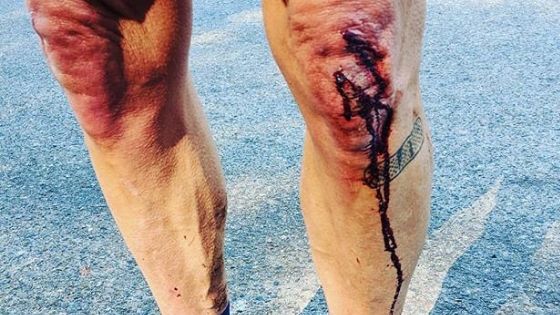
The effect of shoe choice on knee health
There are so many options when it comes to makes and models of running shoes that it becomes almost impossible to keep up.
The first consideration is what your main use of the shoes will be. How hard or soft are your trails? Are you just walking or just running or a combination of the two?
Walking creates a different wear pattern to running as we have a more prominent heel strike when we walk.
I find that the wear pattern I create on my shoes from walking tends to make me overpronate even more when I run. As a result of this, I only walk in shoes that have been retired from active running duty.
That leads on to my second important point when it comes to the impact of shoe choice on knee health. Each model of running shoes have a recommended life span as indicated by the manufacturer. In the past, my running-related problems all stemmed from overextending my shoes beyond their life span.
These days I add each new pair of shoes to my STRAVA profile and indicate what the expected life of that specific pair is. That way I receive a warning when my shoes are within fifty miles of retirement.
Knees are not the most common injury
From the perspective of non-runners, the reaction to saying that you are a trail runner or runner, in general, is almost universal: “What about your knees?”
The interesting fact is that knee injuries are not the most common form of injury.
The most common ailment among runners is Achilles tendon issues according to 56.6% of runners in a recent study. Knee pain ranked second at 46.4% of those polled. It must be noted that the study asked runners to report knee pain and not knee-injury.
From my experience, mere knee pain is seldom a result of a specific knee issue. Every time I have had an Achilles problem and even the time I severely injured my Soleus by slipping on a wet road, I had some associated knee pain. Also when my ITB gets too tight my knee hurts as well due to my leg alignment being a little out. Foam rolling my Achilles and my ITB has so far sorted out every single running-related knee pain that I have had.
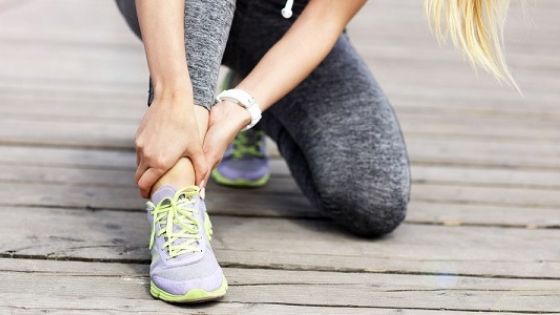
No perfect surface protects from all injuries
When you run on man-made surfaces you become more prone to chronic overuse type injuries due to each footfall being identical to the last.
Conversely running out on the trails has a higher risk of sudden onset injuries like pulls and sprains, not to mention the injuries I know only too well that come from tripping over things and falling down.
That begs the question of what should the solution be. The logical answer will be to include as varied a combination of running surfaces as you are able. That will ensure that you change the way your feet and legs are loaded and thereby reduce your risk of repetitive overuse type injuries.
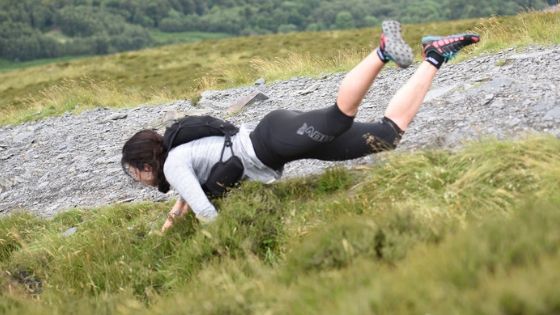
Widen your variety of running surfaces
From my perspective, the best way to achieve that will be to do most of your running out on trails. Sure, you increase the risk tripping and falling not to mention rolling an ankle or getting a muscle/tendon pull. The good news is that that risk decreases over time as you gain experience at running on trails.
In this case, “experience” being the learning curve that happens when you trip over something like a tree root and fall. As you rinse the grit from the graze on your knee with the little water you still have in your bottle you may come to realize that lifting your feet higher on each stride might be the more prudent option.
Never forget the ten percent rule
The ten percent rule was formulated for a reason. Yes, it is a generalization and you might be one of those rare exceptions that are able to increase your run volume by a greater amount each week. However, the chances are that you are not one of the one in a million athletes and will wind up injured.
I speak from experience as it is something that I have done more than once over the years. Almost every time I have gotten injured I am able to trace it back to a training block where I increased total training load by too much. It is a rule that has held true for me, not only for running but the other sports that I have done as well.
